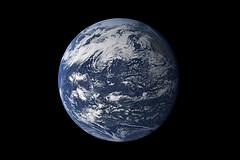 Water is a ubiquitous chemical that is made up of hydrogen and oxygen is essential to all known forms of life. In normal operation, water refers only to its liquid form or state, but the bottom line also has a solid state, ice, and gaseous state, water vapor or steam. Water covers 71% of the Earth 'S surface. On Earth, is mostly found in oceans and other large bodies of water, with 1.6% water in underground aquifers and 0.001% in the air as vapor, clouds (formed of solid and liquid water particles suspended in air), and precipitation. Oceans hold 97% of surface water, glaciers and polar ice caps 2.4%, and other water surface, such as rivers, lakes and ponds 0.6%.
Water is a ubiquitous chemical that is made up of hydrogen and oxygen is essential to all known forms of life. In normal operation, water refers only to its liquid form or state, but the bottom line also has a solid state, ice, and gaseous state, water vapor or steam. Water covers 71% of the Earth 'S surface. On Earth, is mostly found in oceans and other large bodies of water, with 1.6% water in underground aquifers and 0.001% in the air as vapor, clouds (formed of solid and liquid water particles suspended in air), and precipitation. Oceans hold 97% of surface water, glaciers and polar ice caps 2.4%, and other water surface, such as rivers, lakes and ponds 0.6%.
A very small amount of water on Earth is contained in biological organs and products. Water on Earth moves through a constant cycle of evaporation and transpiration (evaporation), precipitation and runoff, usually reaching the sea – water regime. Above ground, evaporation and transpiration contribute to precipitation over land. Clean, fresh drinking water is essential for human beings and other life forms. Access to safe drinking water steadily improved and significantly over the past decade in almost all corners of the globe. There is a clear relationship between access to safe water and GDP per capita. However, some observers estimated that by 2025 More than half of the world's population will face water-based vulnerabilities. Water plays an important role in the global economy, since it functions as a solvent for a wide range of chemicals and facilitates industrial cooling and transportation. Approximately 70 percent of freshwater consumption and agriculture. Source: Environment portal All the ecology there.